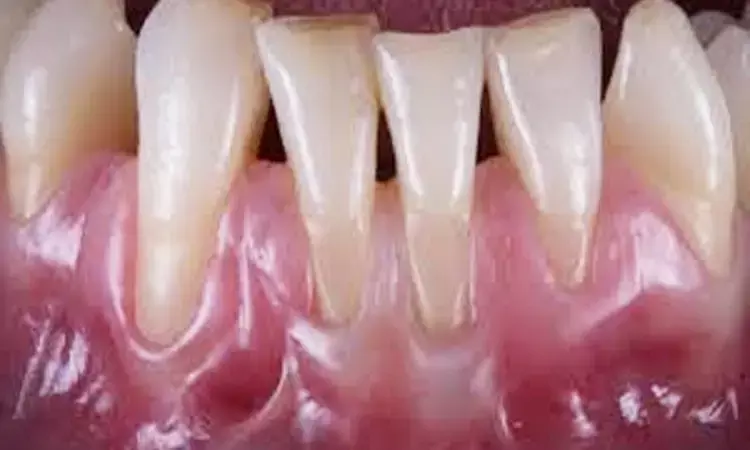- Home
- Medical news & Guidelines
- Anesthesiology
- Cardiology and CTVS
- Critical Care
- Dentistry
- Dermatology
- Diabetes and Endocrinology
- ENT
- Gastroenterology
- Medicine
- Nephrology
- Neurology
- Obstretics-Gynaecology
- Oncology
- Ophthalmology
- Orthopaedics
- Pediatrics-Neonatology
- Psychiatry
- Pulmonology
- Radiology
- Surgery
- Urology
- Laboratory Medicine
- Diet
- Nursing
- Paramedical
- Physiotherapy
- Health news
- Fact Check
- Bone Health Fact Check
- Brain Health Fact Check
- Cancer Related Fact Check
- Child Care Fact Check
- Dental and oral health fact check
- Diabetes and metabolic health fact check
- Diet and Nutrition Fact Check
- Eye and ENT Care Fact Check
- Fitness fact check
- Gut health fact check
- Heart health fact check
- Kidney health fact check
- Medical education fact check
- Men's health fact check
- Respiratory fact check
- Skin and hair care fact check
- Vaccine and Immunization fact check
- Women's health fact check
- AYUSH
- State News
- Andaman and Nicobar Islands
- Andhra Pradesh
- Arunachal Pradesh
- Assam
- Bihar
- Chandigarh
- Chattisgarh
- Dadra and Nagar Haveli
- Daman and Diu
- Delhi
- Goa
- Gujarat
- Haryana
- Himachal Pradesh
- Jammu & Kashmir
- Jharkhand
- Karnataka
- Kerala
- Ladakh
- Lakshadweep
- Madhya Pradesh
- Maharashtra
- Manipur
- Meghalaya
- Mizoram
- Nagaland
- Odisha
- Puducherry
- Punjab
- Rajasthan
- Sikkim
- Tamil Nadu
- Telangana
- Tripura
- Uttar Pradesh
- Uttrakhand
- West Bengal
- Medical Education
- Industry
Case of Subepithelial CT Graft for Gingival Recession Coverage: A Report

Dr Anita Mehta and colleagues from the Department of Periodontology & Implantology, Dasmesh Institute of Research & Dental Sciences, Baba Farid University of Health Sciences, Faridkot, Punjab, India recently reported an interesting case of a middle aged lady who was treated for Gingival Recession Coverage using a Subepithelial Connective Tissue Graft.
The study is published in The Maples.
The Gingival recession is considered a multi-factorial. The etiology may be an anatomically vulnerable area, faulty tooth brushing, high frenum attachment. In cases where there is progressive recession, aesthetics concern or increasing dentinal hypersensitivity, recession coverage can be done. Depending upon the presence or absence of adequate keratinized tissue the technique is chosen. In case of adequate width of keratinized tissue, usually a displaced flap is done and in case where there is inadequate width, gingival grafting is performed.
The authors studied a 37 years old lady who reported with a chief complaint of hypersensitivity and a long clinical crown with respect to maxillary left canine. Partial thickness flap was raised with two and one horizontal incision. Vertical incisions were given 1-2mm far from the adjacent teeth marginal gingiva and horizontal incision was given approx 2mm far from the tip of interdental papilla without perforation, as perforation can affect the blood supply.
The team then thoroughly performed root planing and then obtained the CT graft from the palate 5-6 mm away from the marginal gingiva of premolar and molar region. Follow up was done after every 3 months and it was observed that recession had gained 100% coverage.
CT graft is a bilaminar technique, to increase the gingival and supraperiosteal blood supply to the recipient site. The overlying flap, recipient site bed, interdental papillae provides revascularization and nutrients to the CT graft, they further discussed.
Hence, the researchers concluded that "Miller's class I gingival recession on a maxillary left canine was covered by using SCTG technique and the graft was covered by the coronally advanced flap. CT graft was obtained from the palate."
In clinical practice, periodontists should advise their patients for recession coverage. SCTG advantage over free gingival graft (FGG) is patient's comfort as healing is by primary intention on donor site where as in FGG patient's discomfort is because of secondary intention healing. Better esthetics with SCTG because of better color match. SCTG graft carries genetic message for the underlying tissues to be keratinized, Mehta added.
Dr. Nandita Mohan is a practicing pediatric dentist with more than 5 years of clinical work experience. Along with this, she is equally interested in keeping herself up to date about the latest developments in the field of medicine and dentistry which is the driving force for her to be in association with Medical Dialogues. She also has her name attached with many publications; both national and international. She has pursued her BDS from Rajiv Gandhi University of Health Sciences, Bangalore and later went to enter her dream specialty (MDS) in the Department of Pedodontics and Preventive Dentistry from Pt. B.D. Sharma University of Health Sciences. Through all the years of experience, her core interest in learning something new has never stopped. She can be contacted at editorial@medicaldialogues.in. Contact no. 011-43720751
Dr Kamal Kant Kohli-MBBS, DTCD- a chest specialist with more than 30 years of practice and a flair for writing clinical articles, Dr Kamal Kant Kohli joined Medical Dialogues as a Chief Editor of Medical News. Besides writing articles, as an editor, he proofreads and verifies all the medical content published on Medical Dialogues including those coming from journals, studies,medical conferences,guidelines etc. Email: drkohli@medicaldialogues.in. Contact no. 011-43720751


